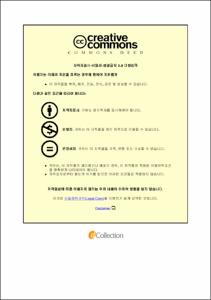고층 공동주택 환기시스템의 결빙방지 방안 및 열공기 환경 개선에 관한 연구
- Abstract
- This research suggests improved ventilation system heat-air enviroment and antifreezing during winter season
As the building become high-raised and air-tight, ventilation is necessary in order to control indoor air quality. There is ventilation system be equipped by law. There are civil complaints be increased about occurring dew condensation and freezing since current ventilation system which focused only air quality and energy-saving, not considering nature of Korea's winter season.
In this report suggests fundamental solution that can be used in plan and constructing stage through simulation and experiment based on base data in order to solve civil complaints.
This report confirmed that the air-tight damper is necessary to solve occurrence of dew condensation and freezing status due to exposure of moisture by stack effect when ventilation system is off.
also compared solutions of reducing freezing status of air-tight damper operation part which allows to open air-tight damper when ventilation system is start up.
Lastly, suggested construction method of duct systems in order to improve air quality and temperature distribution uniformly when ventilation system in normal running condition.
With the research result, this suggested process of ventilation system can be examined when designing and constructing. Also suggests fundamental solution for possible problems can be occur at the high floor of high-rise building in winter season while ventilation system is stop/start up/running.
- Issued Date
- 2015
- Awarded Date
- 2015. 8
- Type
- Dissertation
- Publisher
- 부경대학교 대학원
- Alternative Author(s)
- Kim Chang Yeon
- Affiliation
- 부경대학교 공과대학 냉동공조공학과
- Department
- 대학원 냉동공조공학과
- Advisor
- 금종수
- Table Of Contents
- 차례 i
Table list v
Figure list vii
Photo list xi
Abstract xii
제 1 장 서 론 1
1. 연구 배경 1
2. 연구 동향 6
3. 연구 목적 12
4. 연구 범위 14
5. 논문 구성 17
제 2 장 기초이론 20
1. 고층건물의 연돌효과 20
1.1 고층건물의 정의 20
1.2 고층건물의 분류 21
1.3 연돌효과 23
1.4 연돌효과의 계산 24
2. 환기 27
2.1 환기(ventilation)의 정의 27
2.2 환기의 목적 29
2.3 환기의 대상 29
2.4 환기방식 30
2.5 필요환기량 32
2.6 공기입자의 실내체류시간 37
3. 실내오염물질 39
3.1 실내오염물질의 주요 발생원 39
3.2 실내오염물질의 종류 40
3.3 실내 오염물질의 종류와 인체에 미치는 영향 41
4. 환기관련규정 51
4.1 국내 환기기준 51
4.2 신축 공동주택의 환기기준 52
4.3 국내와 국외의 환기설비 기준 비교 57
5. 공동주택의 환기 58
5.1 공동주택의 환기방식 58
5.2 공동주택 환기시스템 적용 시 고려사항 61
6. 공동주택 환기설계 프로세스 62
6.1 공동주택의 환기계획 시 검토사항 62
6.2 공동주택의 환기설계 프로세스 66
제 3 장 기밀댐퍼의 적용 68
1. 연구 목적 68
2. 실험의 개요 70
2.1 실험장치 70
2.2 실험방법 74
3. 실험 결과 78
3.1 기밀댐퍼 미설치 78
3.2 기밀댐퍼 설치 86
3.3 기밀댐퍼 부착여부에 따른 비교 89
3.4 연돌효과에 따른 공기누설 90
3.5 기밀댐퍼의 적용위치에 대한 고찰 92
4. 요 약 93
제 4 장 기밀댐퍼 결빙방지 94
1. 연구 목적 94
2. 환기장치의 설치위치와 결빙 가능성 95
3. 실험장치 98
4. 실험결과 103
4.1 기밀댐퍼 결빙 가능성 검토 103
4.2 기밀댐퍼 결빙 해소방안 검토 105
5. 요약 114
제 5 장 혹한기 실내 열ㆍ공기환경 수치해석 115
1. 연구 목적 115
2. 계산방법 116
2.1 설치 부자재 116
2.2 대상 공간 118
2.3 해석방법 120
2.4 해석모델 127
3. 계산결과 130
3.1 시뮬레이션의 검증 130
3.2 디퓨저의 개구면적(Open gap) 133
3.3 공기연령, 실내온도 평균 135
3.4 공기연령분포, 온도분포 138
3.5 표준편차 분석 138
3.6 에너지소비량 분석 143
4. 요약 144
제 6 장 환기장치 설계 프로세스 146
1. 환기시스템 설계시 검토사항 146
2. 설비설계 흐름도 148
제 7 장 결론 150
참고문헌 152
감사의 글 158
- Degree
- Doctor
- Files in This Item:
-
-
Download
 고층 공동주택 환기시스템의 결빙방지 방안 및 열공기 환경 개선에 관한 연구.pdf
기타 데이터 / 4.31 MB / Adobe PDF
고층 공동주택 환기시스템의 결빙방지 방안 및 열공기 환경 개선에 관한 연구.pdf
기타 데이터 / 4.31 MB / Adobe PDF
-
Items in Repository are protected by copyright, with all rights reserved, unless otherwise indicated.